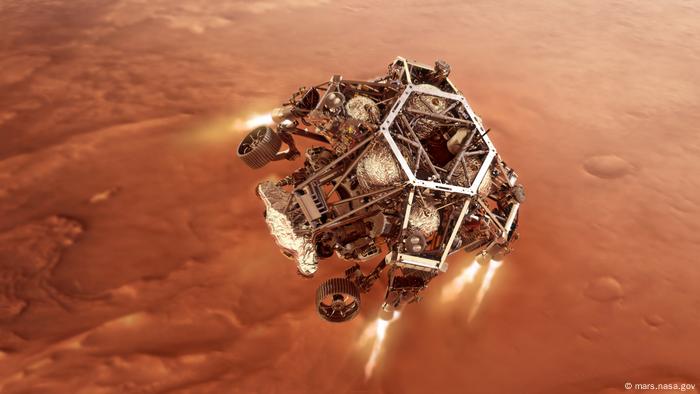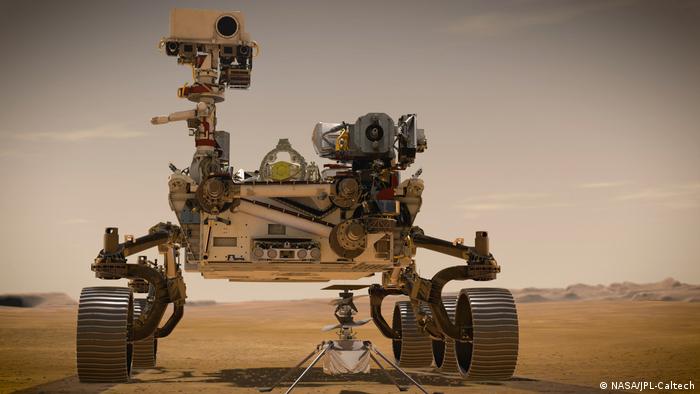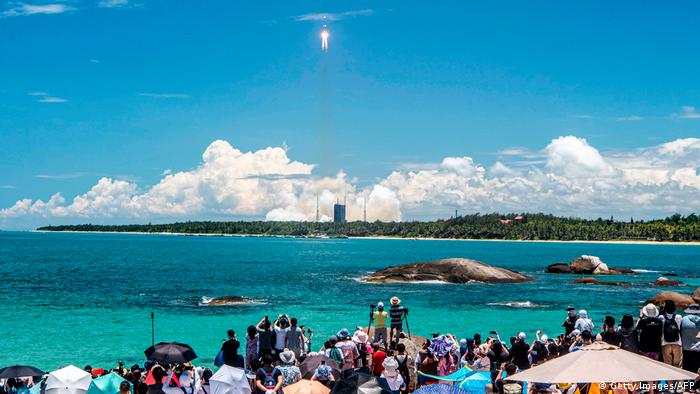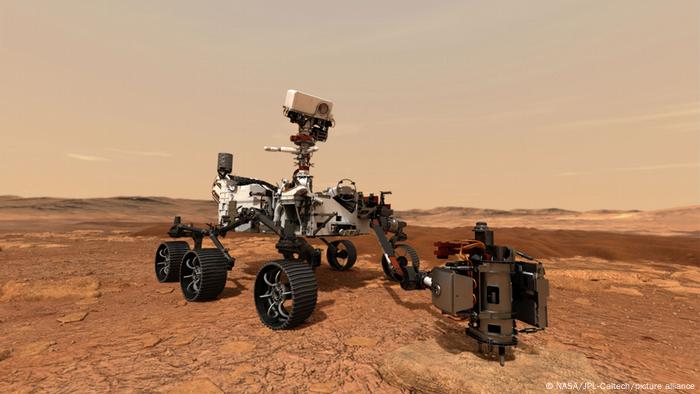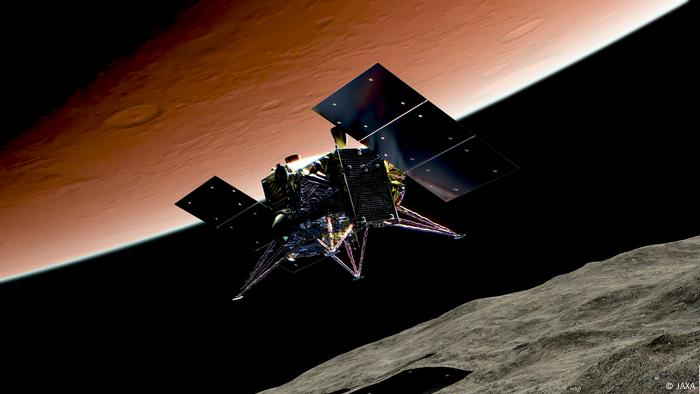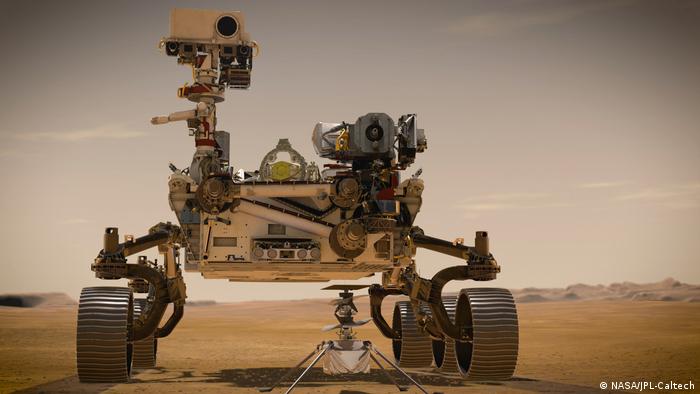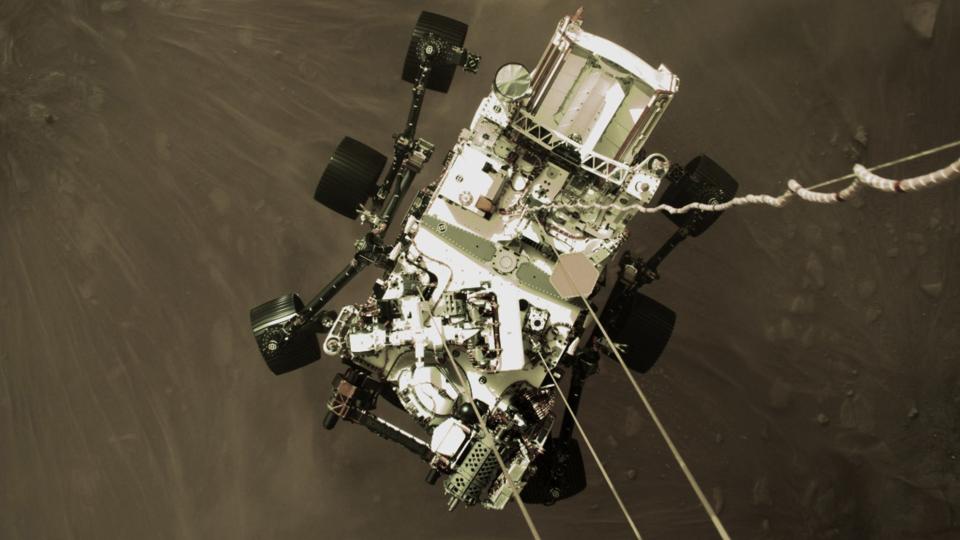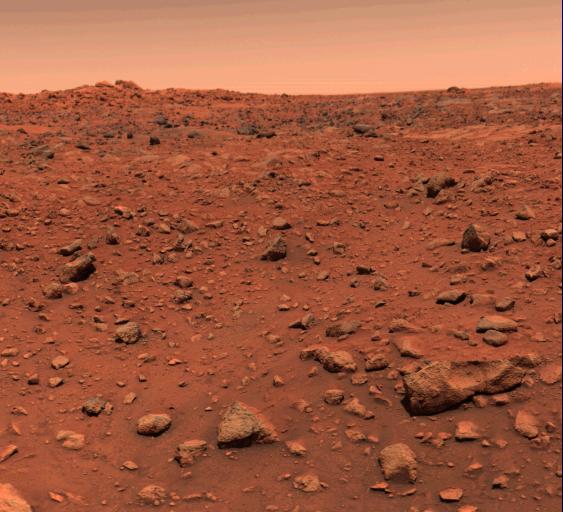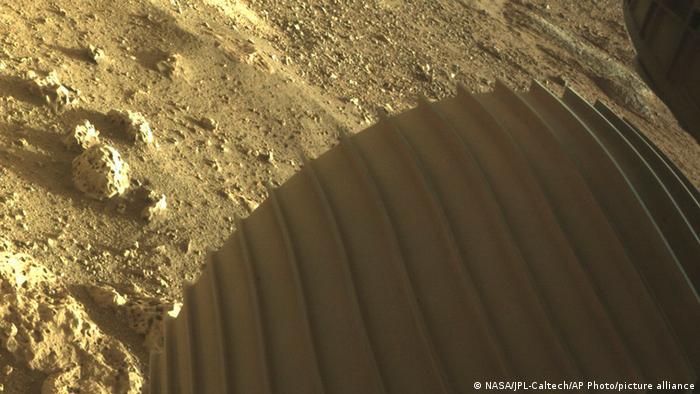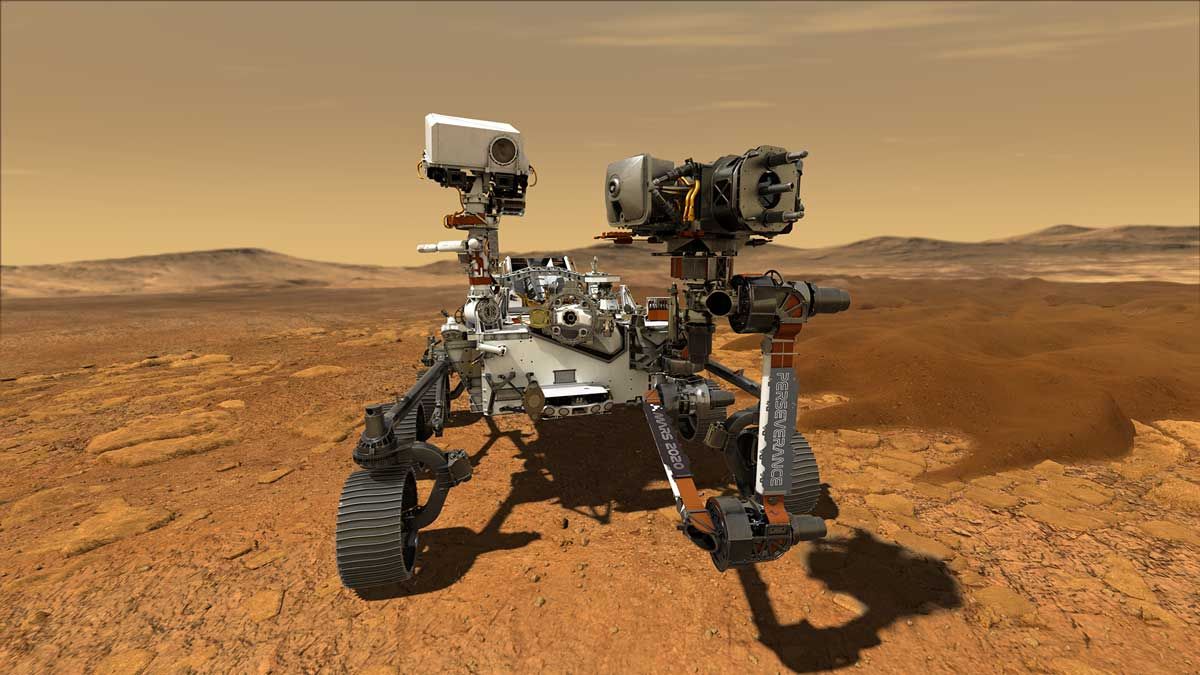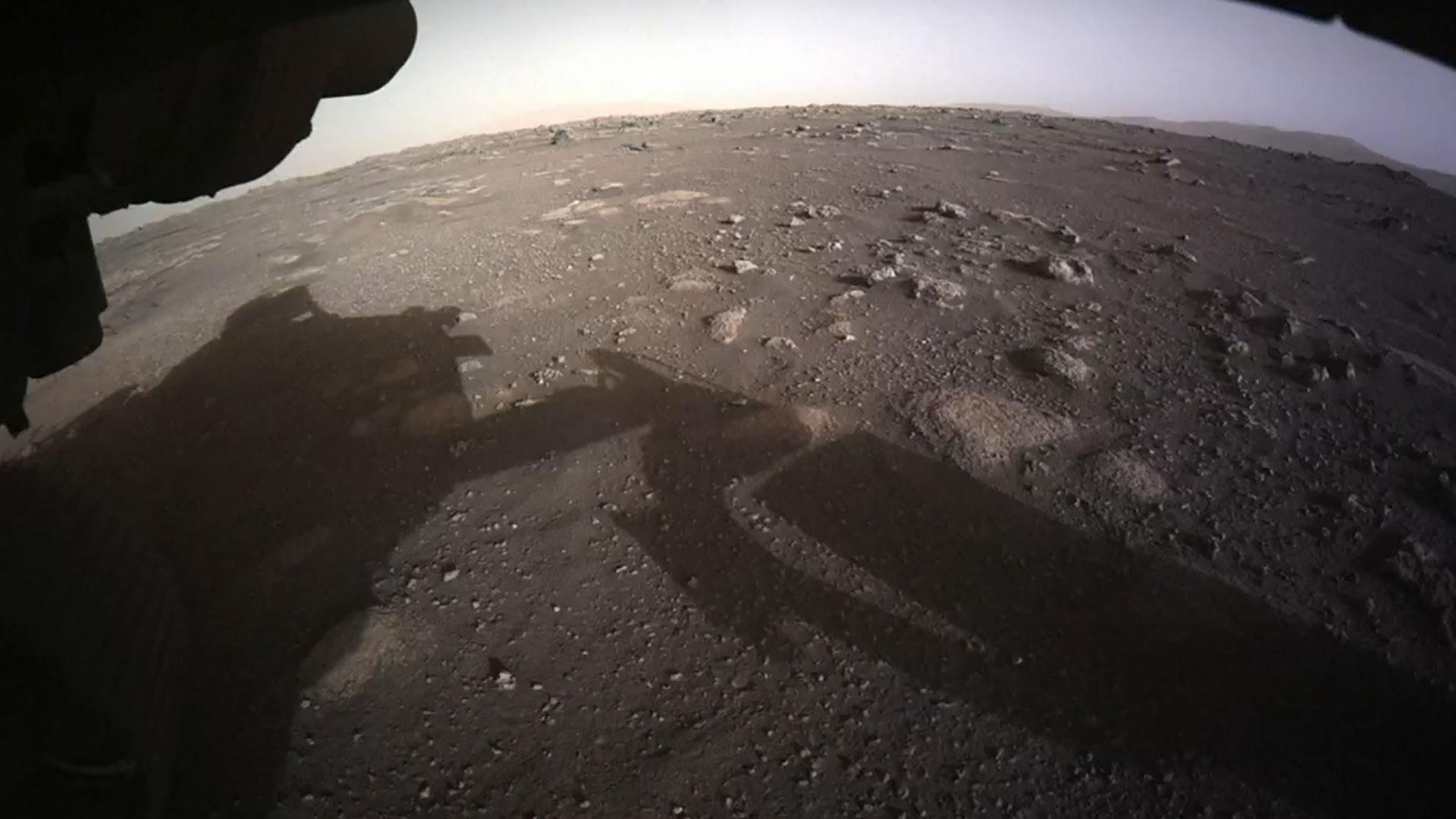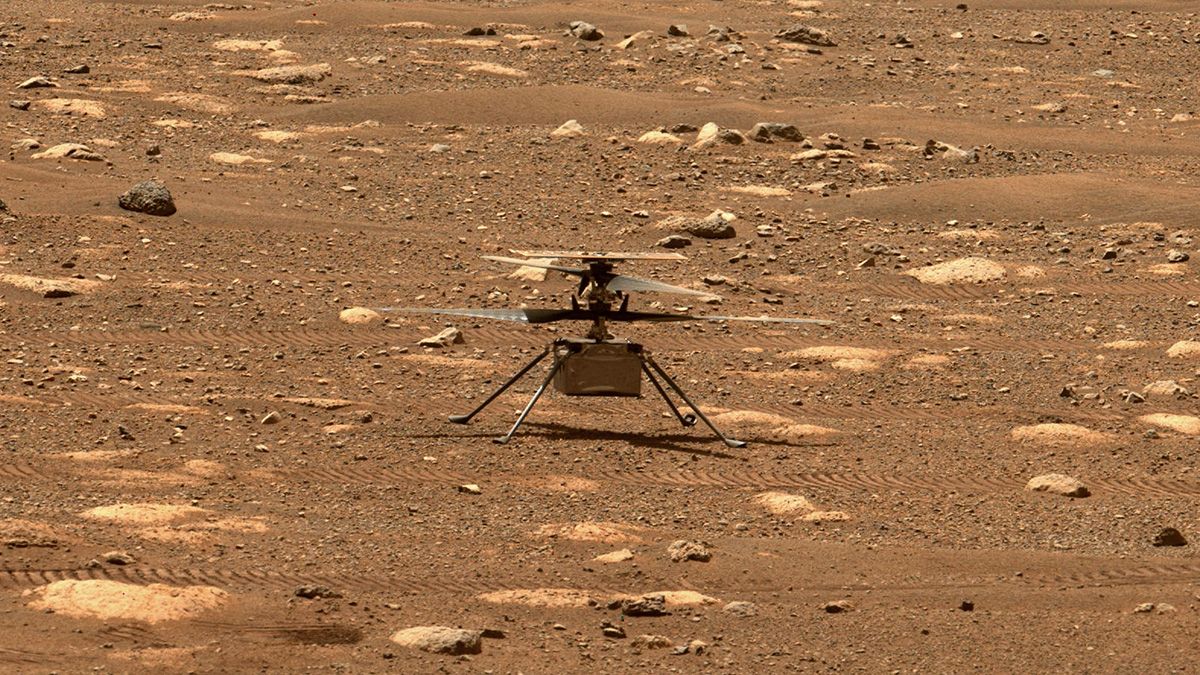Mars set for visits from UAE, China and U.S. spacecraft
The flurry of activity begins Tuesday, as the United Arab Emirates’ Hope probe prepares to enter into orbit around Mars.
t starts with Hope and ends with Perseverance.
Three spacecraft carrying the ambitions and anxieties of three different countries' space agencies are set to arrive at Mars this month, beginning what scientists hope could be a new wave of exploration of the red planet.
The flurry of activity began Tuesday, as the United Arab Emirates’ Hope probe entered into orbit around Mars, making the UAE only the fifth nation or entity to achieve such a feat. Less than 24 hours later, an orbiter and rover launched by China’s space agency are expected to arrive at the red planet. And NASA’s Perseverance rover, a much-anticipated follow-up act to the Curiosity rover, will attempt to touch down on the Martian surface Feb. 18.
The events not only mark a busy month for Mars, but also highlight how much the field of space exploration — long dominated by the United States and Russia — is evolving.
“It’s almost like the Olympics, in that this is competitive but inspires good feelings,” said Robert Zubrin, author of “The Case for Mars” and founder of The Mars Society, a nonprofit organization that advocates for human exploration of the red planet.
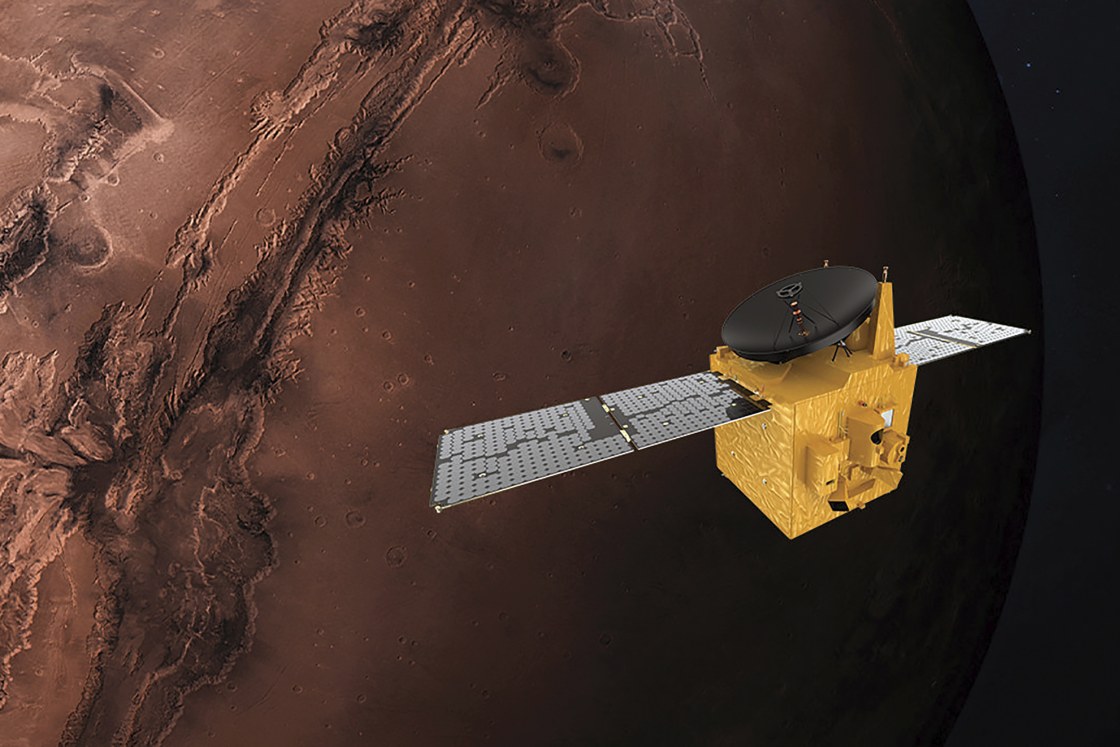 An illustration of the United Arab Emirates' Hope probe.
An illustration of the United Arab Emirates' Hope probe.
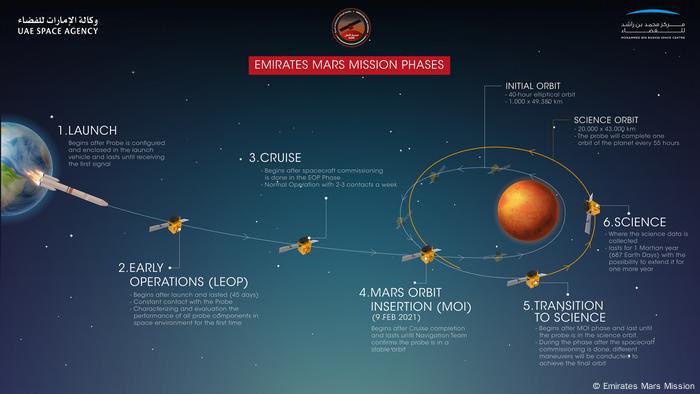
NASA’s history of robotic Mars exploration extends back more than 50 years, but both the UAE and China are attempting to pull off major milestones on their first missions to the red planet. With the Hope probe's successful maneuver on Tuesday, the UAE became the fifth nation or entity to successfully put a spacecraft in orbit around Mars. China is also vying to join those exclusive ranks, currently held by the U.S., the former Soviet Union, the European Space Agency and India.
“It’s remarkable, and the more the merrier,” Zubrin said. “The more players there are, the more discoveries there will be.”
And the resulting discoveries could be monumental. Both China’s Tianwen-1 mission and NASA’s Perseverance rover are designed to search for signs of ancient life on Mars. Studying the geology of Mars and hunting for fossilized microbial life on the planet could also lead to important scientific discoveries closer to home.
Thomas Zurbuchen, associate administrator for NASA’s Science Mission Directorate, said in a statement that the Perseverance rover has the opportunity to “investigate one of the most important and exciting questions of humanity about the origin of life both on Earth and also on other planets.”
But missions to Mars are challenging, beginning with the monthslong journey, covering hundreds of millions of miles, to rendezvous with the red planet.
The UAE’s Hope spacecraft, which launched in July 2020, arrived at Mars at around 10:30 a.m. ET Tuesday. The SUV-size probe conducted a series of strategic engine burns to slow itself down before the spacecraft slipped into orbit around Mars.
Sarah Al Amiri, chair of the UAE Space Agency and minister of state for advanced technology called this complex maneuver the “most challenging phase” of the mission. She said that the engine burns have been “heavily rehearsed,” but acknowledged the high rate of failure of past Mars missions.
“We understood from the first day of even working on this mission that the statistics are only half of those missions succeed in entering orbit around Mars,” Al Amiri said in a Feb. 1 webinar hosted by The Planetary Society and the U.S.-U.A.E. Business Council, a trade organization based in Washington, D.C.
he UAE partnered with the University of Colorado at Boulder to build the spacecraft, which is designed to study the atmosphere of Mars. If the more than $200-million mission is successful, it could serve as an important model for other small countries, Zubrin said.
“It shows that this is an activity that any nation can participate in — you don’t have to be a superpower,” he said.
On the other hand, China has rapidly advanced its space program over just a few decades. Few details about the Tianwen-1 mission have been made public, but the orbiter and rover are expected to reach Mars on Wednesday.
“The United States started Mars exploration by doing a number of Mars flybys, then orbiters, then static landers and then rovers,” Zubrin said. “China is doing all of this at once in their first mission. It’s a very bold thing. They are literally bursting onto the stage of Mars exploration.”
The Tianwen-1 orbiter is designed to circle the red planet and map the Martian surface using a radar instrument that can measure properties of soil and water-ice. China will then attempt to land the rover on Mars sometime in May.
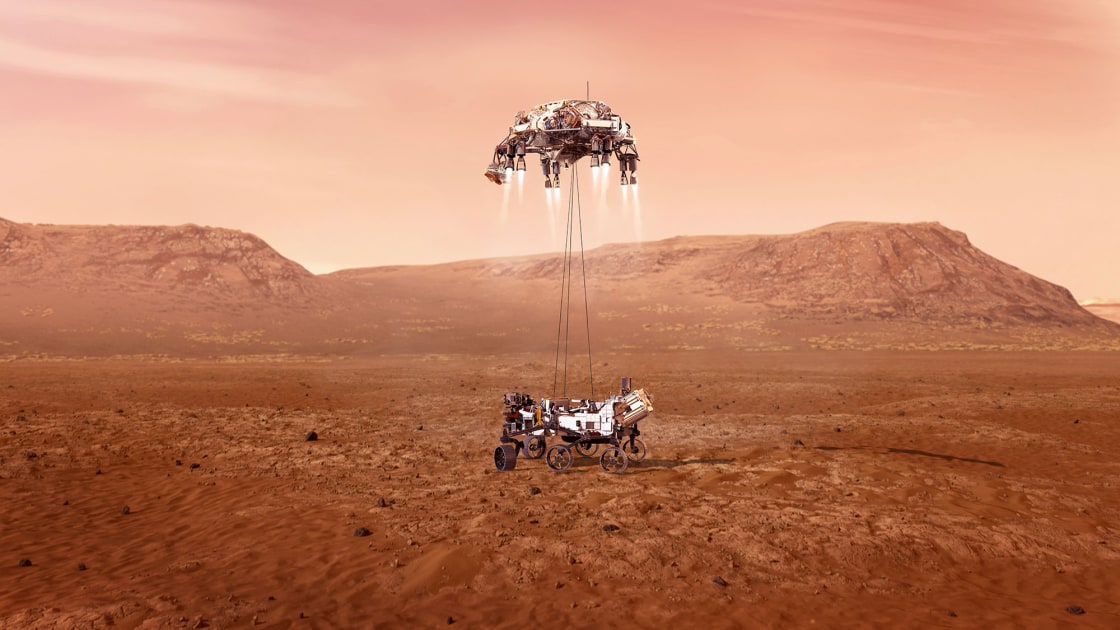 An illustration of NASA's Perseverance rover landing safely on Mars. Hundreds of critical events must execute perfectly and exactly on time for the rover to land safely on Feb. 18, 2021
An illustration of NASA's Perseverance rover landing safely on Mars. Hundreds of critical events must execute perfectly and exactly on time for the rover to land safely on Feb. 18, 2021
But first, the arrival of NASA’s Perseverance rover at Mars on Feb. 18 will cap off the busy month. The car-size robotic explorer, which launched in late July 2020, is equipped with seven scientific instruments to study the geology and climate of Mars.
The rover will attempt to touch down on the red planet using a similar sky-crane that lowered the Curiosity rover to the Martian surface in 2012. At that time, the nerve-wracking stunt was known as the “seven minutes of terror.”
According to NASA, the Perseverance mission could lay the foundation for future human exploration of Mars.
In addition to searching for signs of ancient life, the $3 billion Perseverance mission will test out innovative technologies on the red planet. The rover is carrying a small helicopter that is designed to perform experimental test flights in Mars’ thin atmosphere.
If successful, it would mark a key milestone in powered flight and could usher in a new era of red planet exploration.
“There’s just no comparison between surface rovers and the superior capability of flight vehicles,” Zubrin said. “Rovers can travel a couple hundred meters a day, but a helicopter could do that in a couple of seconds. Imagine being able to traverse any terrain, go into canyons, land at the bottom and then fly out of it. It’s just fantastic what that could do for Mars exploration.”
Mars set for visits from UAE, China and U.S. spacecraft (nbcnews.com)
The flurry of activity begins Tuesday, as the United Arab Emirates’ Hope probe prepares to enter into orbit around Mars.
t starts with Hope and ends with Perseverance.
Three spacecraft carrying the ambitions and anxieties of three different countries' space agencies are set to arrive at Mars this month, beginning what scientists hope could be a new wave of exploration of the red planet.
The flurry of activity began Tuesday, as the United Arab Emirates’ Hope probe entered into orbit around Mars, making the UAE only the fifth nation or entity to achieve such a feat. Less than 24 hours later, an orbiter and rover launched by China’s space agency are expected to arrive at the red planet. And NASA’s Perseverance rover, a much-anticipated follow-up act to the Curiosity rover, will attempt to touch down on the Martian surface Feb. 18.
The events not only mark a busy month for Mars, but also highlight how much the field of space exploration — long dominated by the United States and Russia — is evolving.
“It’s almost like the Olympics, in that this is competitive but inspires good feelings,” said Robert Zubrin, author of “The Case for Mars” and founder of The Mars Society, a nonprofit organization that advocates for human exploration of the red planet.


NASA’s history of robotic Mars exploration extends back more than 50 years, but both the UAE and China are attempting to pull off major milestones on their first missions to the red planet. With the Hope probe's successful maneuver on Tuesday, the UAE became the fifth nation or entity to successfully put a spacecraft in orbit around Mars. China is also vying to join those exclusive ranks, currently held by the U.S., the former Soviet Union, the European Space Agency and India.
“It’s remarkable, and the more the merrier,” Zubrin said. “The more players there are, the more discoveries there will be.”
And the resulting discoveries could be monumental. Both China’s Tianwen-1 mission and NASA’s Perseverance rover are designed to search for signs of ancient life on Mars. Studying the geology of Mars and hunting for fossilized microbial life on the planet could also lead to important scientific discoveries closer to home.
Thomas Zurbuchen, associate administrator for NASA’s Science Mission Directorate, said in a statement that the Perseverance rover has the opportunity to “investigate one of the most important and exciting questions of humanity about the origin of life both on Earth and also on other planets.”
But missions to Mars are challenging, beginning with the monthslong journey, covering hundreds of millions of miles, to rendezvous with the red planet.
The UAE’s Hope spacecraft, which launched in July 2020, arrived at Mars at around 10:30 a.m. ET Tuesday. The SUV-size probe conducted a series of strategic engine burns to slow itself down before the spacecraft slipped into orbit around Mars.
Sarah Al Amiri, chair of the UAE Space Agency and minister of state for advanced technology called this complex maneuver the “most challenging phase” of the mission. She said that the engine burns have been “heavily rehearsed,” but acknowledged the high rate of failure of past Mars missions.
“We understood from the first day of even working on this mission that the statistics are only half of those missions succeed in entering orbit around Mars,” Al Amiri said in a Feb. 1 webinar hosted by The Planetary Society and the U.S.-U.A.E. Business Council, a trade organization based in Washington, D.C.
he UAE partnered with the University of Colorado at Boulder to build the spacecraft, which is designed to study the atmosphere of Mars. If the more than $200-million mission is successful, it could serve as an important model for other small countries, Zubrin said.
“It shows that this is an activity that any nation can participate in — you don’t have to be a superpower,” he said.
On the other hand, China has rapidly advanced its space program over just a few decades. Few details about the Tianwen-1 mission have been made public, but the orbiter and rover are expected to reach Mars on Wednesday.
“The United States started Mars exploration by doing a number of Mars flybys, then orbiters, then static landers and then rovers,” Zubrin said. “China is doing all of this at once in their first mission. It’s a very bold thing. They are literally bursting onto the stage of Mars exploration.”
The Tianwen-1 orbiter is designed to circle the red planet and map the Martian surface using a radar instrument that can measure properties of soil and water-ice. China will then attempt to land the rover on Mars sometime in May.

But first, the arrival of NASA’s Perseverance rover at Mars on Feb. 18 will cap off the busy month. The car-size robotic explorer, which launched in late July 2020, is equipped with seven scientific instruments to study the geology and climate of Mars.
The rover will attempt to touch down on the red planet using a similar sky-crane that lowered the Curiosity rover to the Martian surface in 2012. At that time, the nerve-wracking stunt was known as the “seven minutes of terror.”
According to NASA, the Perseverance mission could lay the foundation for future human exploration of Mars.
In addition to searching for signs of ancient life, the $3 billion Perseverance mission will test out innovative technologies on the red planet. The rover is carrying a small helicopter that is designed to perform experimental test flights in Mars’ thin atmosphere.
If successful, it would mark a key milestone in powered flight and could usher in a new era of red planet exploration.
“There’s just no comparison between surface rovers and the superior capability of flight vehicles,” Zubrin said. “Rovers can travel a couple hundred meters a day, but a helicopter could do that in a couple of seconds. Imagine being able to traverse any terrain, go into canyons, land at the bottom and then fly out of it. It’s just fantastic what that could do for Mars exploration.”
Mars set for visits from UAE, China and U.S. spacecraft (nbcnews.com)


